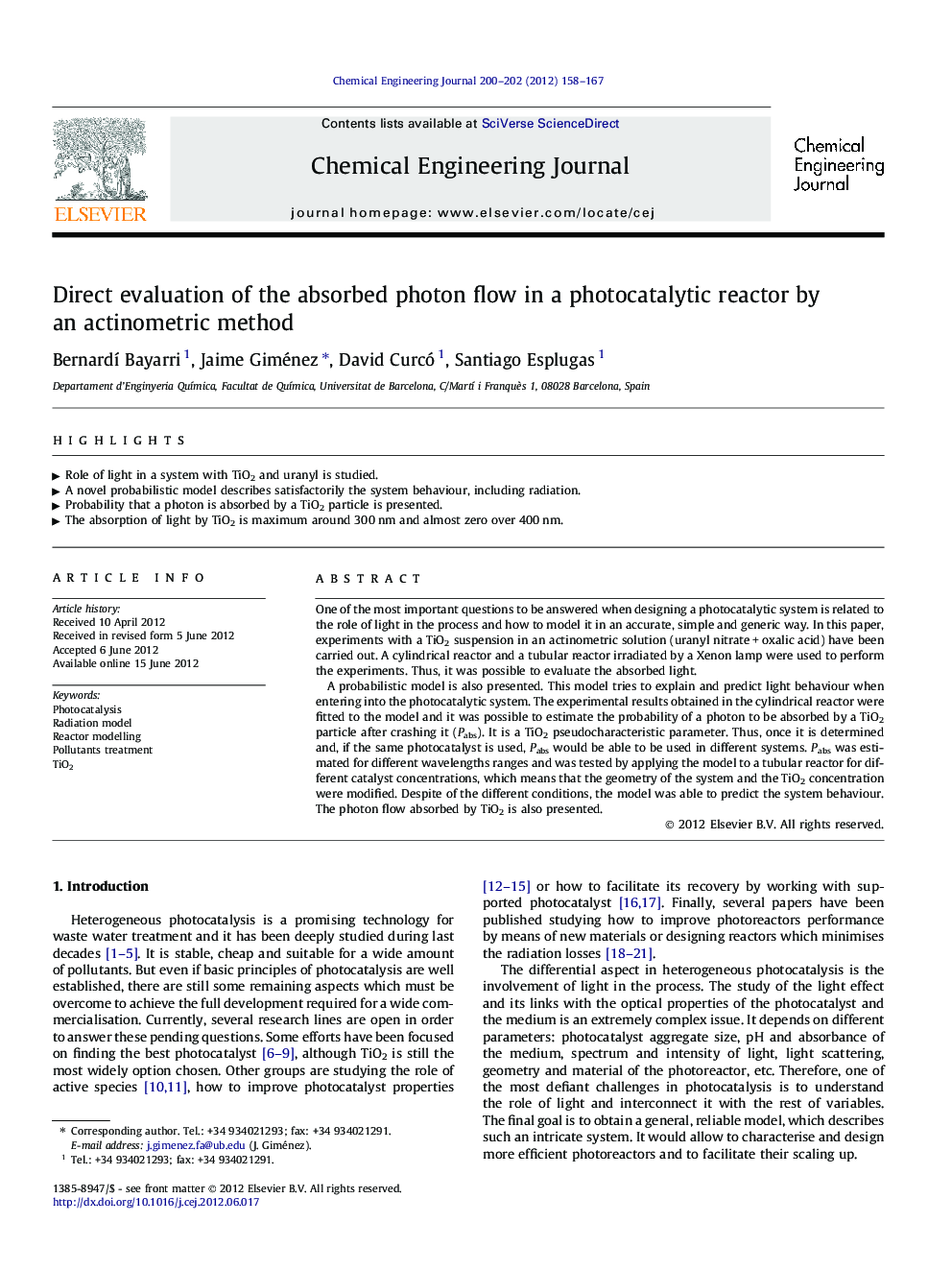| Article ID | Journal | Published Year | Pages | File Type |
|---|---|---|---|---|
| 149543 | Chemical Engineering Journal | 2012 | 10 Pages |
One of the most important questions to be answered when designing a photocatalytic system is related to the role of light in the process and how to model it in an accurate, simple and generic way. In this paper, experiments with a TiO2 suspension in an actinometric solution (uranyl nitrate + oxalic acid) have been carried out. A cylindrical reactor and a tubular reactor irradiated by a Xenon lamp were used to perform the experiments. Thus, it was possible to evaluate the absorbed light.A probabilistic model is also presented. This model tries to explain and predict light behaviour when entering into the photocatalytic system. The experimental results obtained in the cylindrical reactor were fitted to the model and it was possible to estimate the probability of a photon to be absorbed by a TiO2 particle after crashing it (Pabs). It is a TiO2 pseudocharacteristic parameter. Thus, once it is determined and, if the same photocatalyst is used, Pabs would be able to be used in different systems. Pabs was estimated for different wavelengths ranges and was tested by applying the model to a tubular reactor for different catalyst concentrations, which means that the geometry of the system and the TiO2 concentration were modified. Despite of the different conditions, the model was able to predict the system behaviour. The photon flow absorbed by TiO2 is also presented.
► Role of light in a system with TiO2 and uranyl is studied. ► A novel probabilistic model describes satisfactorily the system behaviour, including radiation. ► Probability that a photon is absorbed by a TiO2 particle is presented. ► The absorption of light by TiO2 is maximum around 300 nm and almost zero over 400 nm.
